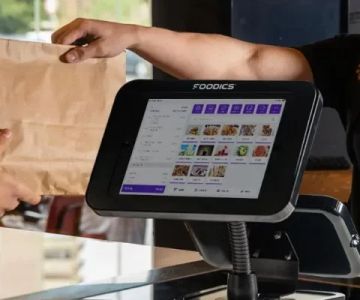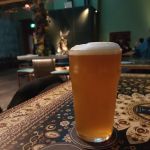
- 1. The Importance of Data Analytics in the Food Industry
- 2. How Restaurants Use Data Analytics to Predict Food Trends
- 3. Real-World Examples of Data-Driven Food Trends
- 4. The Impact of Social Media on Food Trend Forecasting
- 5. Challenges Restaurants Face in Using Data Analytics
- 6. The Benefits of Forecasting Food Trends with Data
- 7. How to Access the Latest Food Trends in Australia
1. The Importance of Data Analytics in the Food Industry
In today’s fast-paced and highly competitive restaurant industry, staying ahead of trends is crucial for success. With the growing availability of data, restaurants in Australia and around the world are turning to data analytics to forecast food trends and make informed decisions. Data analytics allows restaurants to analyze customer preferences, sales patterns, and external factors to predict the next big food trend before it becomes mainstream.
By leveraging data, restaurants can gain insights into what ingredients, dishes, or dining experiences are gaining traction, allowing them to adjust their menus accordingly. This data-driven approach to food trend forecasting has become essential for restaurants seeking to remain competitive in an industry where consumer preferences change rapidly.

Yellow coffee
SydneyCouncil of the City of SydneyNew South Wales
68 York St, Sydney NSW 2000, Australia
2. How Restaurants Use Data Analytics to Predict Food Trends
Restaurants in Australia are increasingly using data analytics to predict food trends with a high degree of accuracy. Here are a few ways they utilize data to stay ahead:

THE TERNARY RESTAURANT
PyrmontCouncil of the City of SydneyNew South Wales
100 Murray St, Pyrmont NSW 2009, Australia
1. Analyzing Consumer Behavior
Data analytics tools allow restaurants to track consumer behavior both online and offline. By analyzing customer purchase history, reviews, and feedback, restaurants can identify emerging preferences. For example, if a restaurant notices an increase in orders for plant-based menu items, it might anticipate a growing trend in vegan dining and introduce more options to cater to that demand.
2. Monitoring Social Media Trends
Social media platforms like Instagram, TikTok, and Facebook play a significant role in shaping food trends. Restaurants use data analytics to monitor social media conversations and hashtags to gauge which dishes, ingredients, or cooking styles are gaining popularity. By tracking the volume and sentiment of posts related to certain foods, restaurants can quickly adapt and capitalize on trending topics.
3. Forecasting Seasonal Trends
Data analytics also helps restaurants forecast seasonal food trends by analyzing historical data and patterns. By reviewing past sales data for certain items during specific times of the year, restaurants can anticipate which ingredients will be in demand. For instance, pumpkin-flavored dishes are likely to be popular in autumn, while fresh salads and light fare are more common in warmer months.
3. Real-World Examples of Data-Driven Food Trends
Several Australian restaurants have successfully used data analytics to forecast food trends, leading to increased customer satisfaction and higher sales. Here are a few notable examples:
1. The Rise of Plant-Based Menus
Over the past few years, plant-based diets have seen significant growth in Australia. Restaurants have tapped into this trend by using data analytics to track the increasing demand for plant-based dishes. For example, restaurants such as Grill’d and Lentil as Anything have expanded their plant-based menus, offering a variety of vegan burgers, salads, and other alternatives to meet the rising consumer interest in plant-based eating.
2. Health-Conscious Dining
Another trend that has gained momentum is health-conscious dining, with consumers increasingly looking for lower-calorie, gluten-free, and keto-friendly options. By analyzing sales data and customer preferences, restaurants are able to predict and introduce healthier menu items, such as grain bowls, keto-friendly pizzas, and sugar-free desserts, to cater to this growing segment of health-conscious diners.
4. The Impact of Social Media on Food Trend Forecasting
Social media is one of the most influential platforms shaping food trends today. Restaurants and foodservice providers closely monitor social media channels to identify emerging trends and adapt quickly. By using data analytics tools that analyze the popularity of specific hashtags or food-related posts, restaurants can gain insights into customer preferences and the next big food craze.
For instance, viral food trends like “cloud bread” or “charcoal ice cream” often gain traction on Instagram or TikTok. Restaurants that are agile enough to incorporate these trends into their menus can capture the attention of social media users and attract more customers to their establishments. The ability to adapt quickly to social media-driven food trends is becoming increasingly important for staying competitive in the food industry.
5. Challenges Restaurants Face in Using Data Analytics
While data analytics offers many benefits, restaurants in Australia face some challenges in implementing these tools effectively. Here are some of the common hurdles:
1. Data Overload
Restaurants can often collect vast amounts of data, but without the proper tools to analyze it, this data can become overwhelming. Sifting through unnecessary or irrelevant data can make it difficult to derive actionable insights. To overcome this challenge, restaurants need to focus on collecting the right data and investing in user-friendly analytics tools that can provide clear and concise trends.
2. High Costs
Investing in data analytics software and hiring skilled professionals to interpret the data can be costly. For smaller restaurants, these costs might seem prohibitive. However, with the right approach, the insights provided by data analytics can result in increased profitability by attracting more customers and improving menu offerings.
3. Privacy Concerns
As restaurants collect customer data, there are privacy concerns regarding how this information is stored and used. Ensuring compliance with data protection laws, such as GDPR, is essential. Restaurants must take steps to safeguard customer data while utilizing analytics tools effectively to predict trends and improve the customer experience.
6. The Benefits of Forecasting Food Trends with Data
By using data analytics to forecast food trends, restaurants in Australia can enjoy several benefits:
1. Enhanced Menu Planning
Forecasting food trends using data helps restaurants make informed decisions about their menus. By predicting what ingredients or dishes will be popular, restaurants can introduce new menu items that are aligned with customer demand, ensuring that they remain relevant in a competitive market.
2. Improved Customer Satisfaction
Restaurants that leverage data to understand customer preferences can offer personalized experiences, making diners feel valued. This leads to higher customer satisfaction and loyalty, resulting in repeat business and positive reviews.
3. Increased Profitability
By forecasting trends and adjusting menus accordingly, restaurants can reduce waste and optimize inventory. This leads to better resource management and improved profitability. Additionally, by staying ahead of the curve with trending dishes, restaurants can attract more customers and boost sales.
7. How to Access the Latest Food Trends in Australia
If you're looking for the latest food trends and recommendations in Australia, Sydney Eats Explorer is a great resource. Whether you're a restaurant owner, chef, or food enthusiast, our platform offers insights, trending ingredients, and dining innovations to help you stay ahead of the curve. Visit Sydney Eats Explorer to discover the hottest food trends in Australia and get expert recommendations on where to eat and what to try next!







 Coffee Shop3.0 (19 reviews)
Coffee Shop3.0 (19 reviews) Joy Korean Fried Chicken4.0 (488 reviews)
Joy Korean Fried Chicken4.0 (488 reviews) Home Thai3.0 (3 reviews)
Home Thai3.0 (3 reviews) Ten Stories4.0 (11 reviews)
Ten Stories4.0 (11 reviews) Kenangan Coffee Westfield Sydney4.0 (20 reviews)
Kenangan Coffee Westfield Sydney4.0 (20 reviews) ArtHouse Hotel3.0 (1210 reviews)
ArtHouse Hotel3.0 (1210 reviews) How Australian Restaurants Are Integrating Wellness and Mindful Eating Trends | Healthy Dining in Australia
How Australian Restaurants Are Integrating Wellness and Mindful Eating Trends | Healthy Dining in Australia How AI Is Personalising Dining in Australia - The Future of Restaurants
How AI Is Personalising Dining in Australia - The Future of Restaurants How Australia’s Restaurant Patrons Are Embracing Family-Style Sharing Plates
How Australia’s Restaurant Patrons Are Embracing Family-Style Sharing Plates How Restaurants Are Using Data Analytics to Forecast Food Trends in Australia
How Restaurants Are Using Data Analytics to Forecast Food Trends in Australia How Restaurants in Australia Are Using Augmented Reality for Wine Pairing Menus
How Restaurants in Australia Are Using Augmented Reality for Wine Pairing Menus How Restaurants Are Using Subscription Models for Meal Clubs in Australia
How Restaurants Are Using Subscription Models for Meal Clubs in Australia